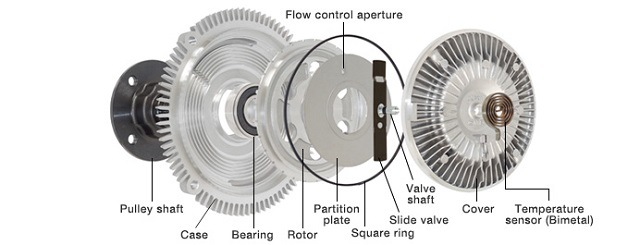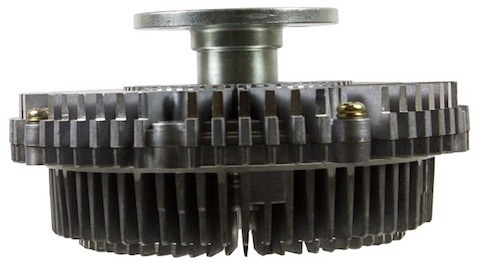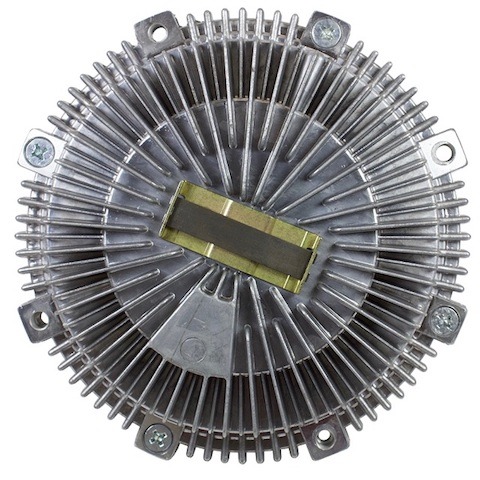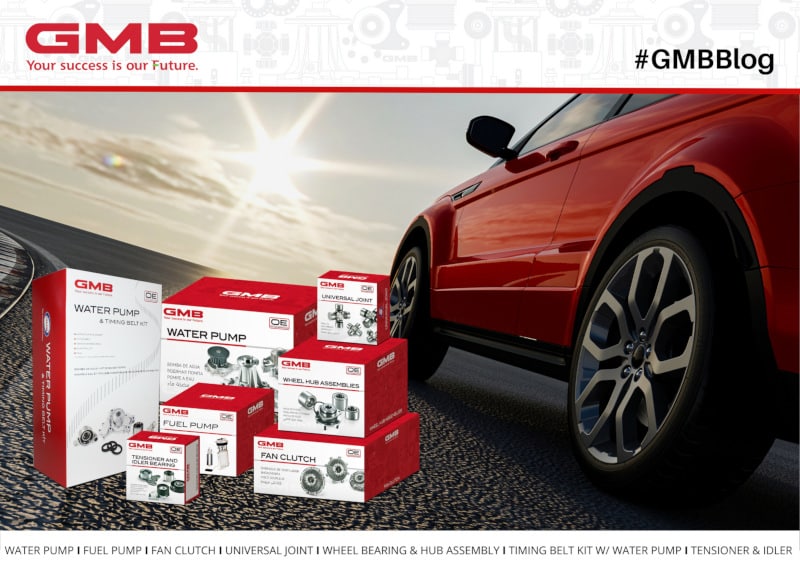Fan Clutch Failure Modes and Troubleshooting
The use of clutch-driven fans in vehicles is no longer common, but there are plenty of vehicles still on the road which use a mechanically-operated cooling fan. Most of these are large, rear-wheel drive vehicles with large displacement engines.
How The Fan Clutch Is Controlled

There are two types of fan clutch: thermally-controlled and inertia-controlled.
A thermally-controlled fan operates by temperature, with the engine’s radiant heat causing the fan to engage or disengage. Two types of thermal control can be found: spring-operated and electrical solenoid-operated. At higher engine bay temperatures, a thermally activated fan clutch will activate, allowing the fan to rotate faster and pull more air through the radiator to provide maximum cooling. Spring-operated fan clutches sense temperature from the bi-metal on the front of the fan clutch and electronically-controlled fan clutches are controlled by the vehicle’s Engine Control Unit (ECU), which measures temperature from sensors throughout the engine bay.
An inertia-controlled fan has a clutch that rotates at a rate depending on the speed of the belt driving the fan pulley. At higher engine speeds, the clutch will rotate faster, causing the fan to rotate faster, pulling more air through the radiator. Conversely, at lower engine speeds, the fan will turn at lower speeds.
How To Identify A Cooling Fan Clutch Problem

The likely symptoms of a failed or failing cooling fan clutch are the same whether the fan is thermal or inertial. The engine overheating when there is no problem with the coolant, thermostat, or the radiator likely means the fan itself is the issue.
Likewise, a fan that is noisy or wobbly is likely ready for replacement. When the fan is dragging on vehicle power, stunting acceleration, and pulling down fuel efficiency, actually identifying the problem as a fan clutch can be more difficult.
There are common symptoms that can point to a fan clutch problem. Troubleshooting the issue can be problematic but does not require special tools.
Here’s what to look for:
- If the engine is running at idle, an inertial-controlled fan may or may not engage, depending on its design. See the vehicle’s specifications for details. If it should be running whenever the engine is idling, it may need replacement.
- Temperature-controlled fans should be engaging when the engine is at or above operating temperature and then disengaging once temperature stabilizes.
- When driving below highway speeds (below 35 mph), the fan should engage and be heard when the window is rolled down. Likewise, it should become silent when the vehicle approaches highway speed (about 50 mph).
- In nearly all cases, temperature-controlled fan clutches will disengage the fan when the vehicle is operating at highway speeds (over 50 mph). The fan should not be heard at these speeds as enough air should be moving through the radiator to cool it. This allows fuel economy and engine power to increase. Testing for this requires a good ear, a relatively silent stretch of highway, and for the vehicle to be at or above normal operating temperature.
- When the engine is off and cool enough to touch, a mechanic should be able to grab the fan and spin it only with reluctance. There should be no wobble laterally (front to back, toward and away from the radiator) in the fan clutch. A bound clutch is also a sign of problems. Any fluid leaking from the fan clutch is a sure sign of a broken clutch.
Since fan clutches are often attached to the same shaft as the water pump, if the water pump is replaced, the fan clutch should be replaced as well since damage to one component may transfer to the other.
Best Practices For Fan Clutches

A cooling fan clutch is expected to fail over time. Most clutches will fade with time as spring-type clutches lose thermal sensitivity and fluid-filled clutches lose fluid viscosity. Clutch slipping and eventual failure are normal with time. Consider the fan clutch symptoms listed above and be aware of potential failure.
Keeping a vehicle operating without fan wobble, with good belts, and without ranging outside of the normal operating temperature range are key to keeping a fan clutch and its engine operational for as long as possible.
MORE CONTENT
Stay current!
Sign up here to get the latest news
and updates on all things GMB.
Sign Up To Receive GMB News & Updates!

